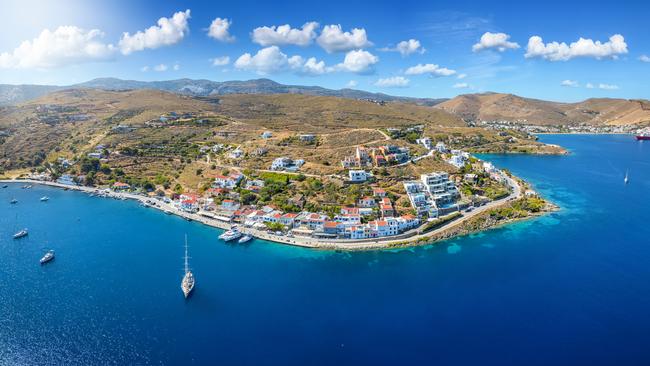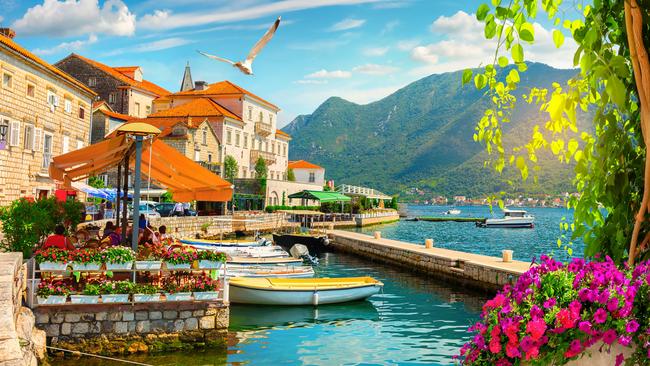Dodge the crowds with these lesser-known European gems
Forget about "destination dupes", Europe has plenty of gems to discover when you get off the beaten track.
Lifestyle
Don't miss out on the headlines from Lifestyle. Followed categories will be added to My News.
There’s so much chatter lately about “destination dupes” – less-touristed places that offer similar rewards to popular but overcrowded sites – that I think it’s important to point out… Europe is a big continent.
There are plenty of unsung or under-sung places to visit for a memorable escape. No matter whether it’s April or August, here are some of my favourite discoveries.
1. In Barcelona last October I had a brilliant time despite the negative publicity and tourists (easily avoided at that time of year) but the welcome was noticeably warmer an hour southwest of the capital. In Tarragona, another seaside Catalan city rich in architecture and gastronomy but with way better beaches, crowds were sparse at its magnificent Roman ruins including a second-century amphitheatre facing the Mediterranean Sea. Far from being fatigued by tourism, the locals were happy to open up to an outsider over coffee or a glass of vermouth.
2. In Portugal, on a coastal drive from the south to Lisbon, I reached a wild stretch of Atlantic coastline that reminded me, at times, of home. The sweeping beaches caught between dramatic cliffs and relentless breakers were largely empty except for wet-suited surfers and seafood shacks.
Amado, Vale Figueiras and Monte Clérigo all captured that carefree vibe Australians treasure in a summer break but Odeceixe felt like somewhere I could comfortably spend a chunk of time. It’s right on the border of the Algarve and Alentejo, two of Portugal’s most alluring regions, with the town perched above the calm Seixe River and the pounding Atlantic. There’s a little bar there, Esplanada do Mar, where I’d happily sit watching the waves roll in till sunset.

3. There’s a similar sense of nature’s drama at Piana, on Corsica’s west coast, where I wandered along mule tracks through (Unesco-listed) red-granite gorges above dazzling aquamarine seas. The perfect choice for outdoorsy types who like to indulge in earthy cuisine, excellent Med wines and eye-popping views.
4. Across the Bonifacio Strait in Sardinia, the upper-class congregate in Costa Smeralda and the crystal-water coves of the east coast. It’s worth braving summer throngs to swim in the clearest European seas you’ve ever seen at Cala Luna and Cala Brandinchi, but the entire coastline is gorgeous and the food’s phenomenal (I’ll never forget my first taste of bottarga – dried mullet roe – shaved on hot spaghetti with salted ricotta). Honestly, just hire a car and go for it.
5. Everyone should always take the opportunity to visit Venice – it’s the most poetic city on Earth – but after braving the mobs by the Grand Canal I’d suggest driving 90 minutes northeast to Gorizia or Cormons. You can taste the seasons of Italy here in the Friulian food and the wine, produced in the Gorizia Hills or Collio on the border with Slovenia. Visit Primosic and Bjana wineries and the Michelin-starred La Subida in Cormons, where you can stay in posh forest lodgings. (Just don’t confuse historic Gorizia with ugly, modern Nova Gorica on the Slovenian side.)

6. One of my cherished discoveries last year was the little Cycladic island of Kéa, around an hour from Athens by local ferry yet amazingly under the radar. Just seven villages, including the ancient hilltop capital, Ioulida, where donkeys replace cars and you can still find traces of the sixth-century BC walls, 56 beaches and 12 walking trails edged neatly in dry-stone walls. My kind of Greek island.
7. Montenegro’s 240km coastline is one of the most striking in Europe and the Bay of Kotor, even when seen with your own eyes, is hard to believe. It dazzles the senses with the intensity of its blues and greens, its perfect Venetian villages tumbling down to the shore and a muscular ridge of mountains behind. See the fortified town of Kotor but then head somewhere (only slightly) quieter along the coast like the Baroque village of Perast or Herceg Novi, up near the Croatian border.
8. I don’t find the Albanian coastline anywhere near as attractive as Montenegro’s but the Albanians Alps are spectacular. The forested limestone peaks of the Accursed Mountains, as they’re also known, form a natural border with Montenegro and Kosovo.

I stayed in the tiny village of Lëpushë at Bujtina Lëpushë Agroturizem, run by Paulin Nilaj and his wife, Bayerna (her father named her after his favourite soccer team), and feasted on lamb hock, burkes, cheeses and salad. The ingredients come “100 per cent” from his village, Paulin told me as he poured shots of plum raki to aid my digestion. I can highly recommend it for a simple, breathtaking and uncrowded European escape.
It’s a date
In Lëpushë I was a week late for the annual Logu i Bjeshkëve festival in August where highlanders don traditional dress and gather to “choose the most beautiful girl” of the Albanian Alps. Maybe next time.
Originally published as Dodge the crowds with these lesser-known European gems





